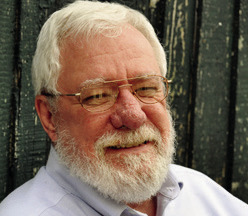Bradshaw
Tensions in the Middle East have been with us for a long time, and the man squarely in the middle of them when they were perhaps even more divisive than they are today was the man for whom one of Lafayette’s busiest streets is named.
Jefferson Caffery became the U.S. ambassador to Egypt in 1949, a year after the war that brought about the establishment of Israel and the displacement of more than 700,000 Palestinians. By then he had long experience and had honed great diplomatic skills, both of which were sorely needed – especially after a revolution in Egypt forced King Farouk from the throne in 1952.
Caffery was born and reared in Lafayette and was a member of the first class of the Southwestern Louisiana Industrial Institute, which is now ULL. He received a bachelor’s degree from Tulane in 1906 and returned to Lafayette to teach at SLI, including a stint as football coach for at least one game in 1907, an 11-5 victory over Crowley High, which was then a big rival.
He began his diplomatic career in 1911 as second secretary of the legation in Caracas, Venezuela, later served as ambassador to El Salvador (1926-1928), Colombia (1928-1933), Cuba (1934-1937), and Brazil (1937-1944), and was ambassador to France in the difficult years following World War II.

Bradshaw
He’d been in Egypt long enough to make a difference when the globetrotting columnist Robert Ruark caught up with him at the beginning of 1953. Writing from Cairo, Ruark said he’d found “a great change in the attitude toward the Americans” since he’d last visited, and credited Caffery for it. “Eighteen months ago, the American was viciously hated in this city,” he wrote. “It was not safe for an American to walk alone. There were mutters and gestures and active threats.
“The Egyptians were quite reasonably sore at us for our stand on Palestine, with whom they were at war. As one Eyptian put it, ‘We got so mad at the Americans that for a while we even forgot to hate the British [who had occupied Egypt for decades].’ The man also said, ‘I don’t know how he did it, but I credit your ambassador, Jefferson Caffery, for bringing about the change. … He understands us. He goes among us. He has thrown his embassy wide open to people of all classes, people who never saw the inside of it before.’” Mohammed Naguib, who led the 1952 revolution, called Caffery “a wonderful man” who “knows us very well and wants to help us.” He said, “Caffery has made the difference in our feeling for your country.” Even taxi drivers and bartenders told Ruark that Caffery had brought about a great change.
“Most of the time you hear nothing but knocks for the State Department abroad,” Ruark wrote. “We have certainly unloaded some foul balls on our unsuspecting friends, but Caffery actually seems to run an embassy for its primary purpose, which is to create a mutual understanding between the country he represents and the country he inhabits.”
The columnist said Caffery had “prowled every street and alley” and knew “every inch of Cairo,” including during the 1952 revolt “when it was worth your life to appear on the streets.” According to Ruark’s account, “Caffery got tired of sitting cooped up in the embassy. He called for his car and drove all over Cairo, unguarded, through the screaming, murderous crowds. I doubt if another foreigner would have done it and lived.” The ambassador had some experience with danger. He’d survived assassination attempts in Cuba and in France, which may have been why a riot in Cairo did not intimidate him.
After the revolution Caffery helped negotiate an agreement under which the British withdrew from Egypt after 72 years of occupation. He remained in Cairo until 1955, when he retired from the diplomatic corps after 43 years of service under eight presidents – Taft, Wilson, Harding, Coolidge, Hoover, Roosevelt, Truman, and Eisenhower. He lived in Rome until 1973, when he moved back to Lafayette, began to write his memoirs, then quit writing them. “I wrote a fair amount of stuff and then took a look at it,” he told his biographer Philip Dur. “It was all nonsense. It sounded as if all I had done was go to tea parties and talk to kings.”
Ambassador Caffery died in 1974 at the age of 87. He and his wife Gertrude, who died a year earlier, are buried behind the old chancery building next to St. John Cathedral.
You can contact Jim Bradshaw at jimbradshaw4321@ gmail.com or P.O. Box 1121, Washington LA 70589.

